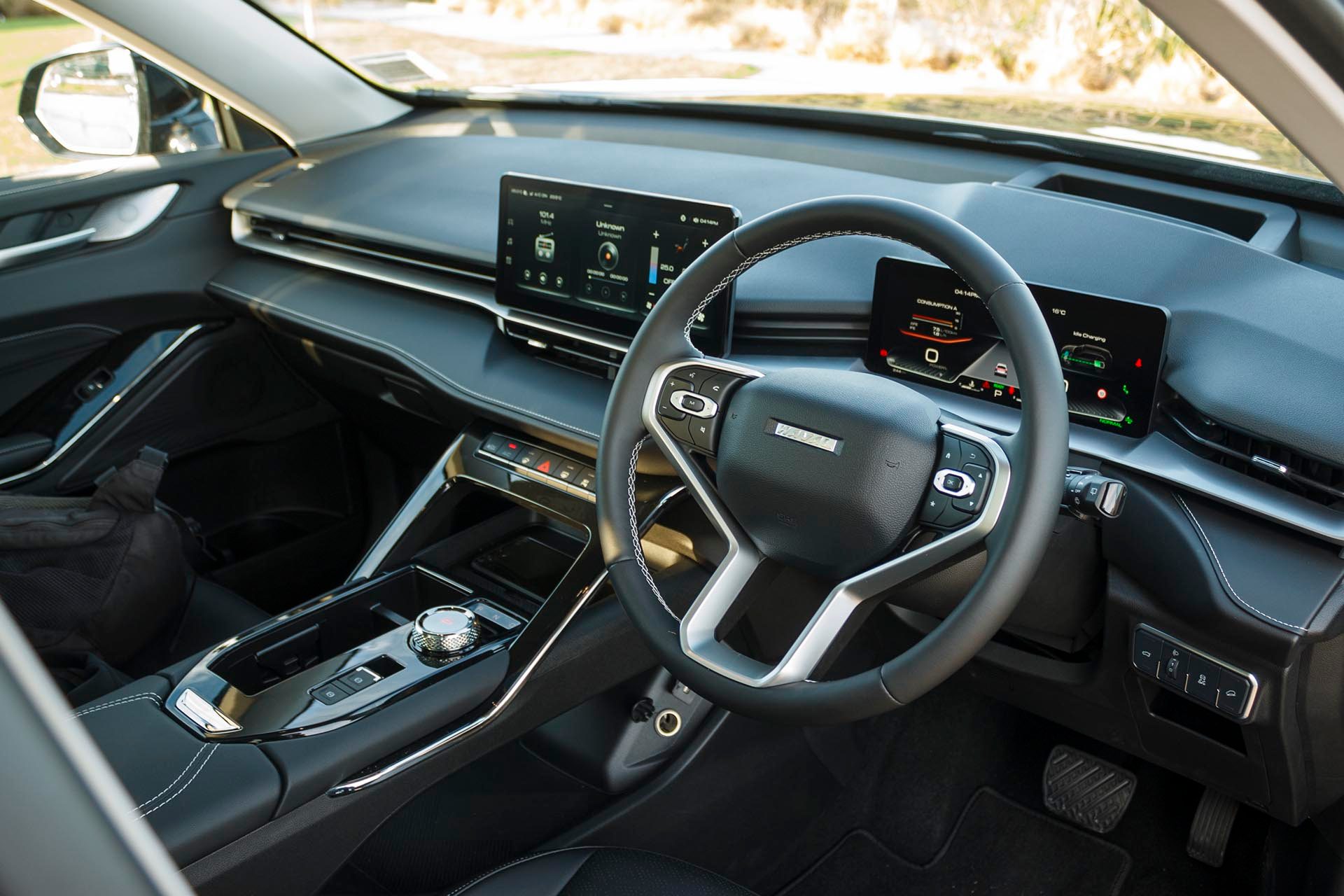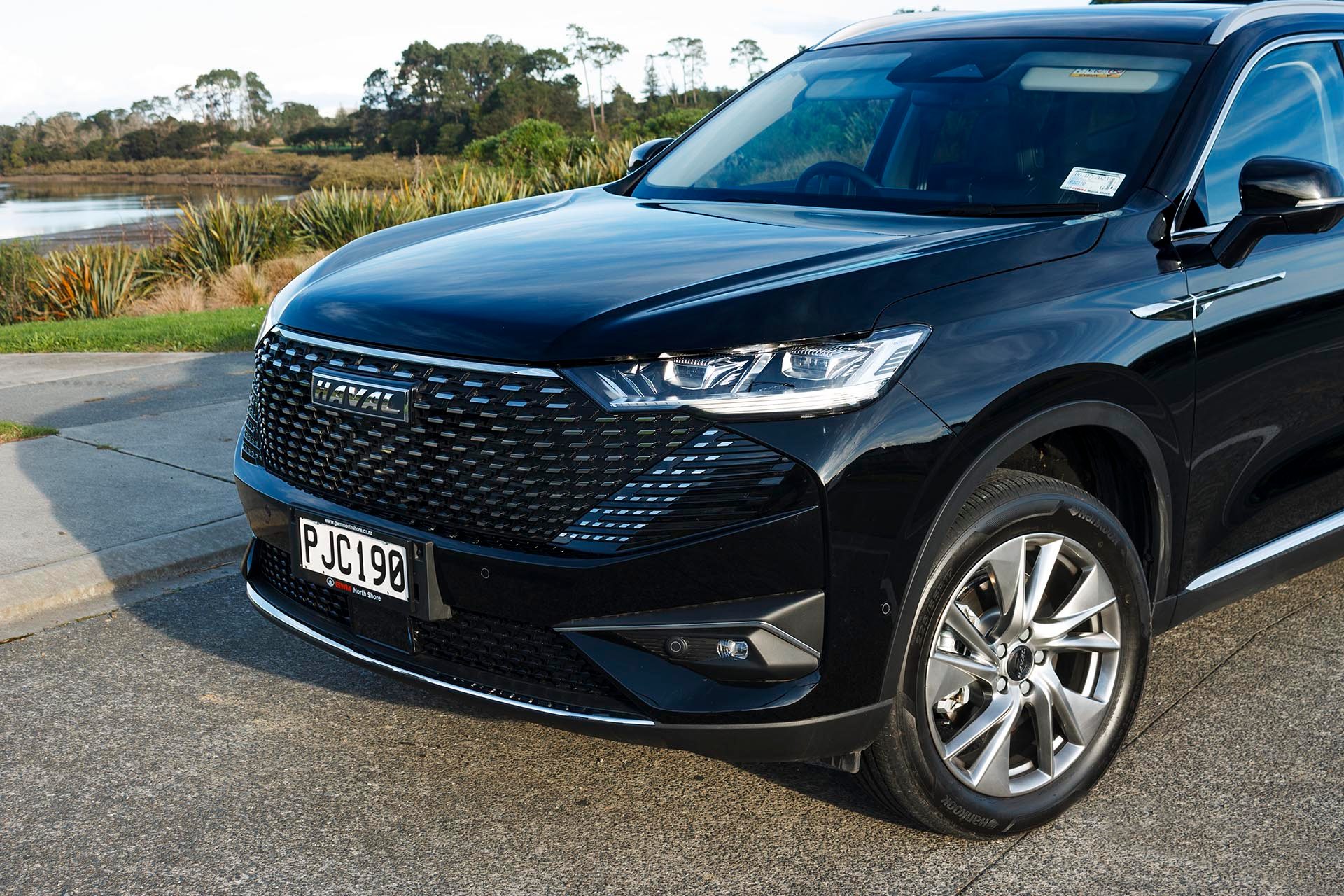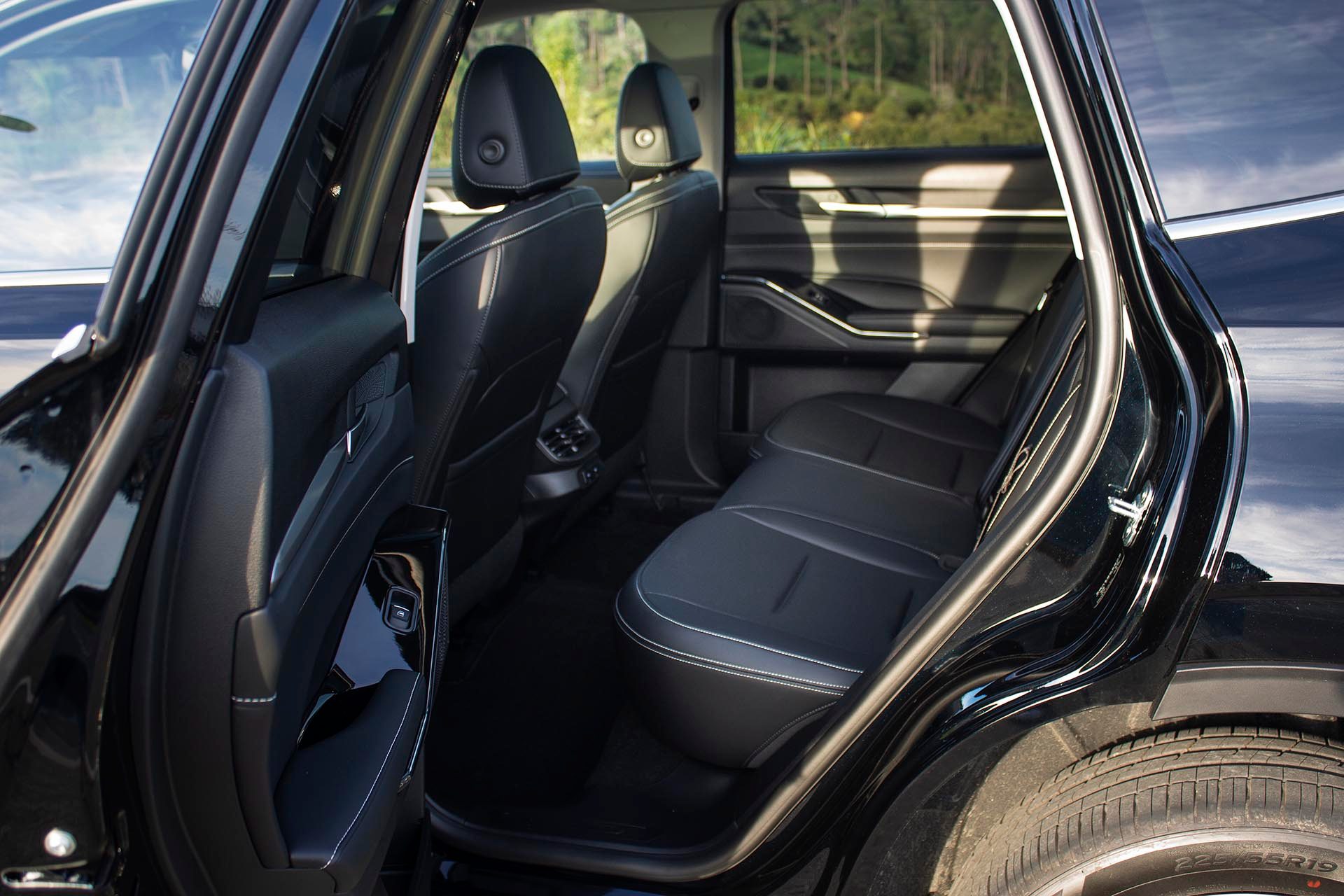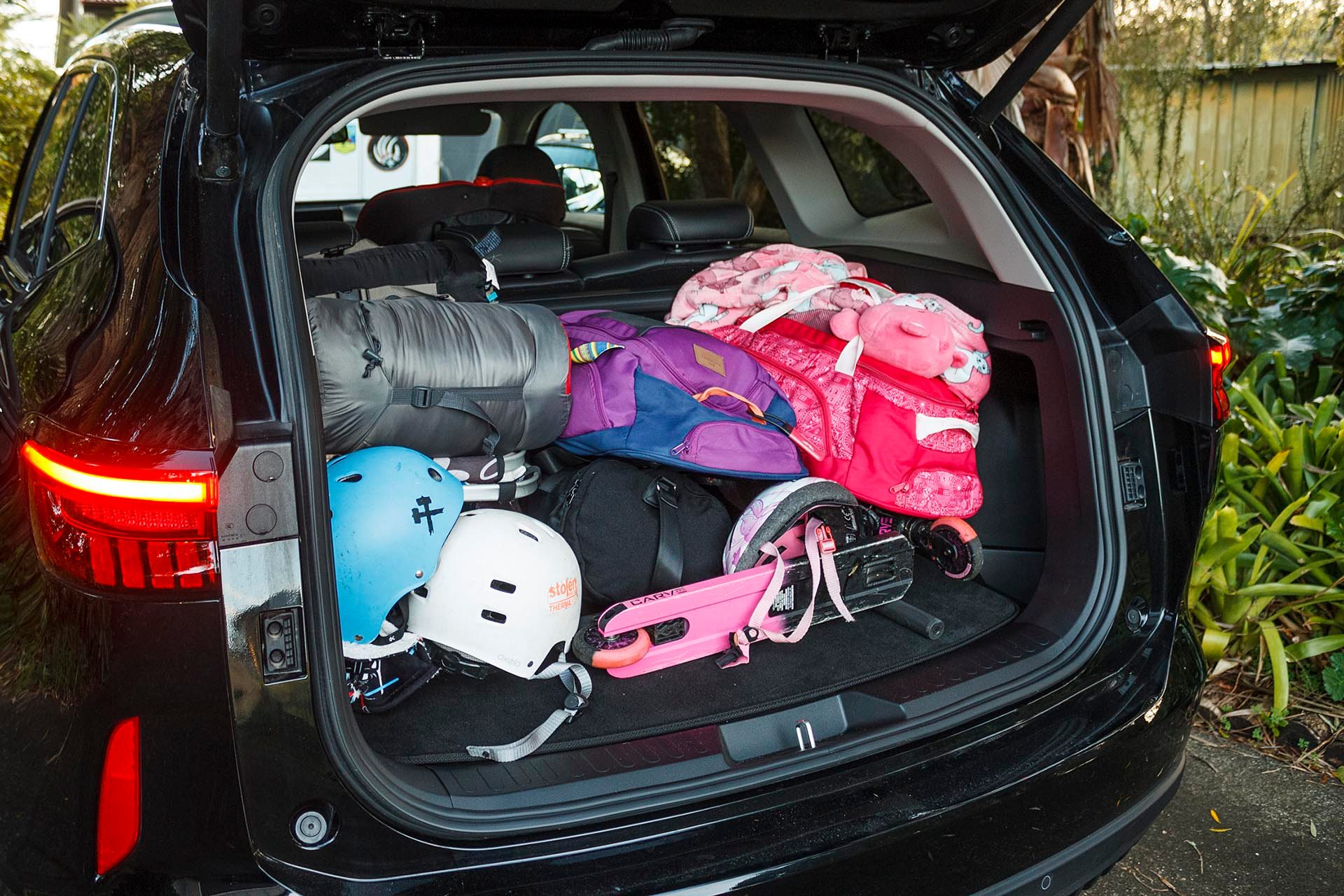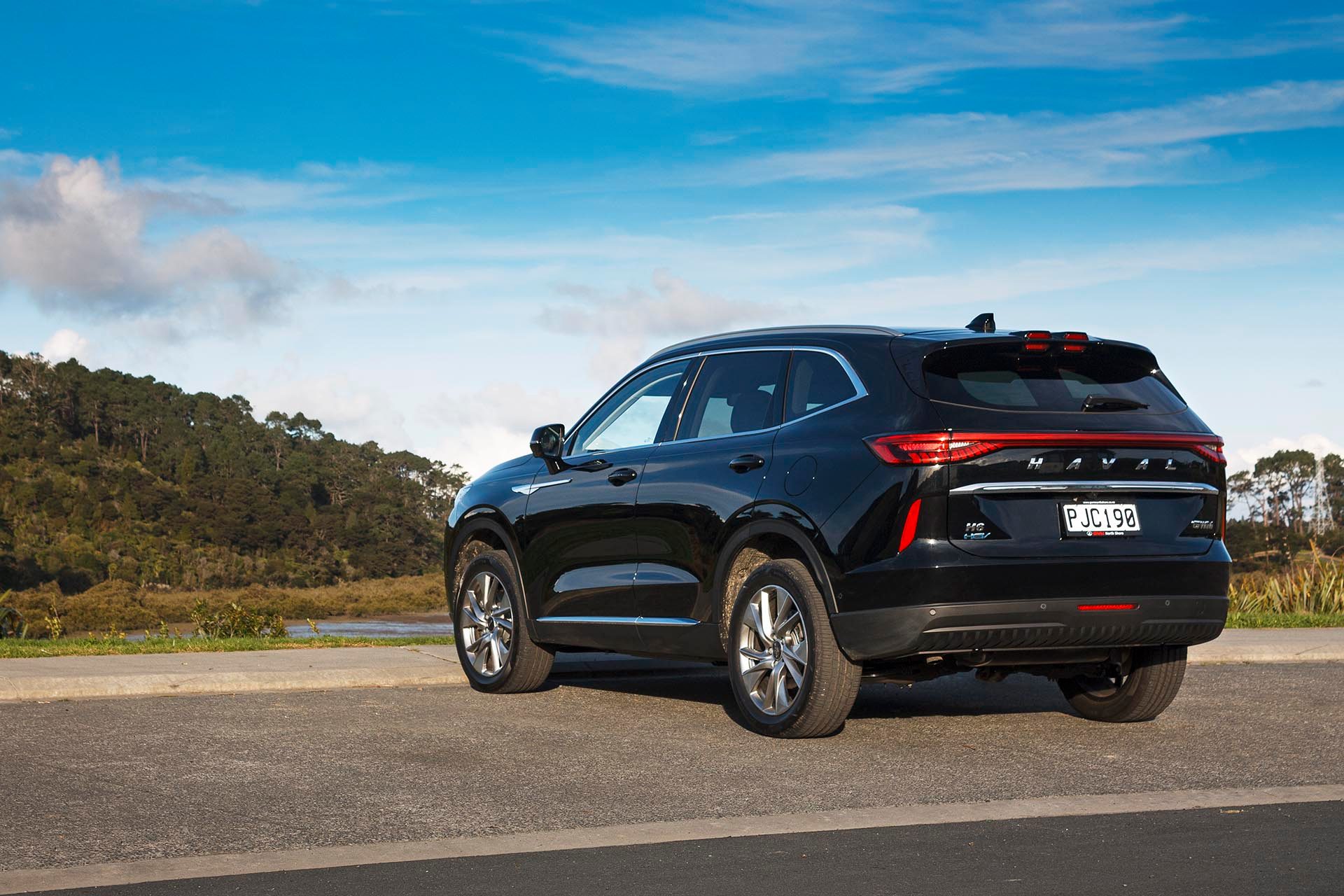2022 Haval H6 HEV Ultra review
Haval has added a hybrid option to its H6 range. It brings the usual electrified price premium so is it worth the spend?

Haval has added a hybrid option to its H6 range. It brings the usual electrified price premium so is it worth spending the extra?
While the Haval model range is shrinking here, now with just the Jolion and H6 to choose from, they’ve added new variants to hold the line. These new options include hybrids, with the Jolion and the H6 petrol electric recently arriving. There is also a new image leader in the H6 GT, a fastback SUV which we’ll report on next month but for now, here’s the hybrid H6.
Landing here in Ultra spec, you get everything thrown in on top of the hybrid driveline. At $48,490, there’s a $6500 premium over the conventional Ultra 2WD. However, with its reduced fuel use and emissions (5.8L/100km/133g/km according to the Rightcar website), it’s up for a $1768 rebate, taking the difference to $4732. As the 2.0T Ultra 2WD is rated at 8.2L/100km, above average annual mileage will be needed to repay the hybrid’s premium in terms of fuel bills but consider also that this is a better car to drive. While the 2.0T manages 150kW and 320Nm, the hybrid can apparently muster a combined output of 179kW and 530Nm. These are slightly misleading figures, the system potentially able to replicate them for a brief moment in time but the powertrain’s output does feel rather robust. There’s no lag off the line, the torque streaming smoothly as the electrics and 1.5T work together. However, with only the fronts driving, too much of a good thing can induce some torque steer and wheel spin (cue abrupt TC intervention) when wet.
Where the H6 gets a seven-speed twin-clutch, the hybrid has a ‘Dedicated Hybrid Transmission’, which feels like a CVT in operation. And so it’s smooth, refined and, when the engine and electrics are working in parallel, hushed. It’s even quieter in BEV mode of course.
This is ‘a self-charging hybrid’ as lay folk like to label them, i.e. no need to plug it in. Recharging the 1.8kWh lithium-ion battery is handled by the engine (which powers the generator) and via regen, the motors generating electricity when decelerating.
This H6 will EV better than any hybrid we’ve driven yet. Most only give brief bouts of electric running, a kay or two at best, but this can do much better than that. We are talking about urban trawling here but it’s genuinely decent in this regard and EVs happily above 50km/h too.
It does depend on which drive mode you’re in, however. The default is Normal, where it prioritises parallel drive; i.e. the electrics and engine are working together, though it does switch to EV mode on a light throttle. In Eco, it will tap the electrics more often, and this helps lower the fuel use average.
Thanks to the vexing nature of the trip computer, it’s hard to get a gauge on overall usage but our suburban sorties tended to be in the 5-6L/100km range in Eco, while closer to the 8L/100km mark in Normal, which highlights the effectiveness of the electrics at reducing gas use. Motorway/highway fuel use is somewhere in the 6-7L/100km range. The H6 runs on 91 too, thankfully. We couldn’t find any way to manipulate the hybrid system, and neither is it required for it takes care of itself. And so this H6 HEV is utterly conventional in operation, and nothing for technophobes to worry about (there’s a five year/150,000km warranty too).
But not all operations are straightforward. The lack of physical buttons in the cabin sees the touchscreen used for everything, and some operations are problematic due to the arrangement of the menus and a laggy response. The drive modes, for instance, are found by diving into the menus, which is a chore. Thankfully we discovered a secret shortcut screen, bringing up a page of frequently used functions and easier access to the fuel-saving Eco mode.
Along with reducing your local emissions, another reason to go hybrid is the look, the front end of the HEV an improvement on the chromed, spider web grille of the regular H6. It complements an easy-to-like design for what is a well proportioned SUV. It’s practical too. The boot is on par with most in the class, and usefully shaped. While there is no spare wheel under the floor, the rear seats fold flat easily to improve load carrying. No complaints should be heard from the rear seat where there is ample leg room, and a flattish floor makes it a more comfortable fit for three. Up front it is spacious too, the decor pleasing, as is the build quality with the hard plastics reserved for the lower parts of the interior. The driving position could be better as adjustment at the steering wheel is limited. The tiller itself needs a redesign, its buttons asked to do a job they were never designed for. As such, configuring the swish looking digital display and cycling through the various readouts is frustrating. The old cruise control wand slung off the column isn’t the best way to do it nowadays either.
While there are far fewer safety related bongs and beeps in this H6, some of the systems still require sorting. It’s handy to have active cruise, but this gets flummoxed by slight bends on the motorway and other traffic situations that similarly priced competitors can easily deal with. And the fuse for the control-freak lane keeping function needs to be pulled. Its reversing camera is one of the best you’ll find at this price point though, with crystal clear imaging and multiple views for car park manoeuvres; there’s even a self-parking function if you have no idea.
We found the H6 ‘right-sized’ for city use. This is an easy-going drive, helped by that refined powertrain, while it rides okay for the most part but can thump over big bumps. The steering is overly assisted (even in its Sport setting, one of three the driver can choose from) and removed from the turning action. H6 can be unsettled by mid-corner bumps, which rouses the ESP. Further fine tuning of the bump and rebound wouldn’t go astray, neither would some more suspension travel. It’s best to stick to the main highways then.
The hybrid gubbins address our main concern with Haval’s early SUVs, a liking for gas, while the added refinement and ease of operation make this H6 more affable as a middle-of-the-road SUV contender. A pity it’s only offered in top Ultra specification however. Yes, it’s nice to have a powered tailgate, head-up display, heated and ventilated seats, charge pad and the like, but a base spec hybrid, at closer to $40k with the rebate, would make it better still.
| Model | Haval H6 HEV Ultra |
| Price | $48,490 |
| Clean Car Discount | Rebate -$1768 |
| Engine | 1499cc, IL4, T, DI |
| Power/Torque (combined) | 179kW/530Nm |
| Battery | 1.8kWh |
| Drivetrain | e-CVT, FWD |
| Fuel Use | 5.8L/100km |
| C02 Output | 133g/km |
| 0-100km/h | 7.98sec |
| 80-120km/h | 5.08sec (142m) |
| 100-0km/h | 36.58m |
| Stability systems | ABS, ESP, |
| Safety | AEB, ACC, BSM, LDW, RCTA, ALK, AHB |
| Luggage Capacity | 600-1485L |
| Tow rating | not rated to tow |
| Service intervals | 12 months/15,000km |
| Warranty | 5 years/150,000km |
| ANCAP rating | 5 stars 2022 |
| Weight | 1690kg (claimed) |
This article was originally published on autocar.co.nz.
Also consider
